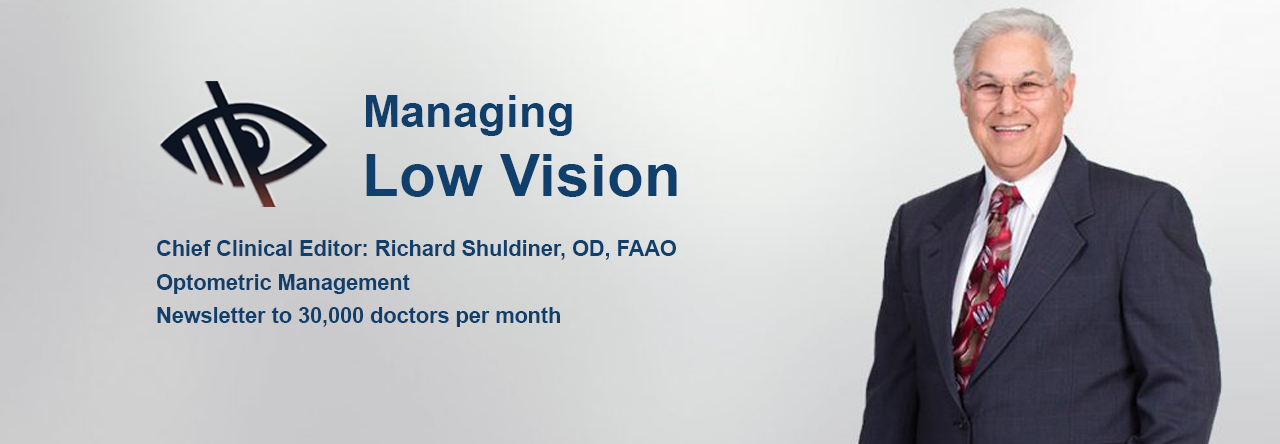By Lynne P. Noon, OD, FAAO with Richard J. Shuldiner, OD, FAAO
For most people, there is nothing more devastating and frightening than vision loss. Patients fear a loss of independence and diminished self-worth. Patients often come to us with limited knowledge regarding their eye condition and prognosis. When they are referred to low vision services, many still hope that finally, someone will be able to give them back their vision and make them whole again. It is our job to manage false expectations while never taking away hope. As low vision rehabilitation providers, there is nothing more important to the success of your visually impaired patient than education regarding their eye condition and the realistic solutions toward their independence. The following are some of the topics that we think important to have the patient understand:
- The low vision examination is a functional evaluation that will allow the patient to perform daily activities despite their vision loss. They need to understand that we can make them functional, but they must be flexible. They do not have the same vision that they did before and therefore, cannot expect to perform their tasks in the same manner.
- We discuss the need for more than one pair of glasses, magnifying device or other solution. I use the analogy of a carpenter needing more than one tool to build a house.
- We initially discuss all tasks that they are having difficulty performing but when reviewing solutions, work on one task at a time. For most patients, the first task that they want to work on is to read. Once the needed power is determined, present all options in that power including reading glasses, reading telescopes, hand and stand magnifiers and portable and desktop video magnification. Discuss the advantages and disadvantages of all solutions and have the patient work with all so that they can decide on the best solution for their needs.
- If a second visit is needed, we review patient progress and again review realistic expectations and solutions. Often the patient needs to hear this several times before they fully understand. If they are doing well, we move on to other tasks.
Patients do not understand optics or technical explanations, so we discuss things in a language that the patient can understand. We have visual or verbal ways of explaining how scotoma’s limit function; why moving reading material closer to the eye gives magnification; why field is lost with increasing magnification; why they get a bigger field of view by bringing an optical magnifier closer to their eye; why stronger magnifiers have smaller lenses and why “regular” glasses cannot magnify at distance, etc. I have made many visual ways of explaining these concepts. If the patient cannot see the material, I enlarge it with a video magnifier.
Proper education of your patient and their family usually leads to acceptance of the vision loss and acceptance of low vision solutions. When a patient truly understands their options, they will not continue to look for that “miracle cure or miracle glasses”. This will lead to their success.

Magnification minimizes distortion and scotoma.

Ring Scotoma simulation limiting function, despite magnification.


